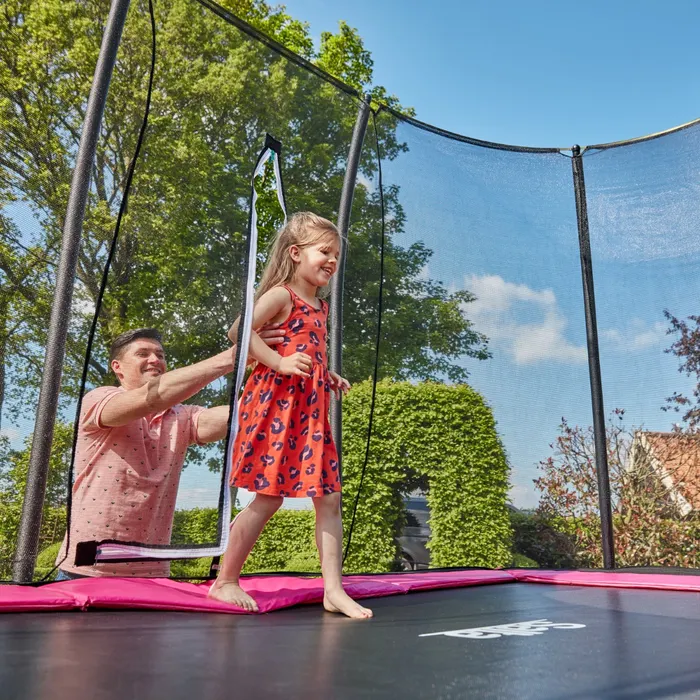
Trampolines are a fun way to spend time outdoors and enjoy physical activity, but it’s important to remember that they can also be dangerous. In fact, according to the Consumer Product Safety Commission, trampoline-related injuries have been on the rise in recent years. From sprains and fractures to head injuries, trampoline accidents can result in serious harm or even death. As a result, it’s crucial to prioritize safety and injury prevention when using a trampoline.
Before we dive into safety measures, it’s worth noting some of the key reasons why trampolines can be dangerous. Firstly, trampolines create a significant amount of force and momentum, as the individual bouncing is propelled upwards and downwards. This force can be difficult to control, especially for children or those who are inexperienced using a trampoline. Additionally, trampolines often have hard metal frames or springs that can cause injury if a person falls or lands on them. Finally, trampolines can be unpredictable, as the user’s movements can cause changes in trajectory or force that are difficult to anticipate.
Now, let’s discuss some best practices for ensuring safety and injury prevention while using a trampoline.
Supervision
One of the most important safety measures when using a trampoline is supervision. An adult should always be present when children are using a trampoline, and that adult should be paying close attention to their movements and behaviors. This supervision can help prevent injuries by ensuring that children are using the trampoline appropriately and not engaging in risky behavior.
Proper equipment
Another key aspect of trampoline safety is ensuring that you have the proper equipment. This includes a trampoline with a safety net enclosure, as well as appropriate padding on the frame and springs. The safety net enclosure can help prevent falls from the trampoline, while the padding can help cushion any impact with the metal frame or springs. Additionally, it’s important to use a trampoline that is appropriate for your size and weight.
Safe jumping techniques
When using a trampoline, it’s important to employ safe jumping techniques. This includes jumping in the center of the trampoline, rather than near the edges where falls are more likely. Additionally, it’s important to avoid performing flips or other acrobatic maneuvers, as these can be dangerous and increase the risk of injury. Finally, individuals should try to maintain control of their movements and not bounce too high or too erratically.
Limit use to one person at a time
Another important safety measure is to limit trampoline use to one person at a time. When multiple individuals are using a trampoline simultaneously, they can collide or accidentally land on each other, increasing the risk of injury.
No unsupervised use
It’s also important to note that trampolines should never be used unsupervised. Even if you have a safety net enclosure and other equipment, there is still a risk of injury associated with trampoline use. As a result, it’s important to only use a trampoline when an adult is present and actively supervising.
In conclusion, trampolines can be a fun and exciting way to enjoy physical activity, but it’s important to prioritize safety and injury prevention when using them. By following best practices such as supervision, proper equipment, safe jumping techniques, limiting use, no unsupervised use, and proper installation and maintenance, you can help ensure that you and your loved ones stay safe while using a trampoline.

